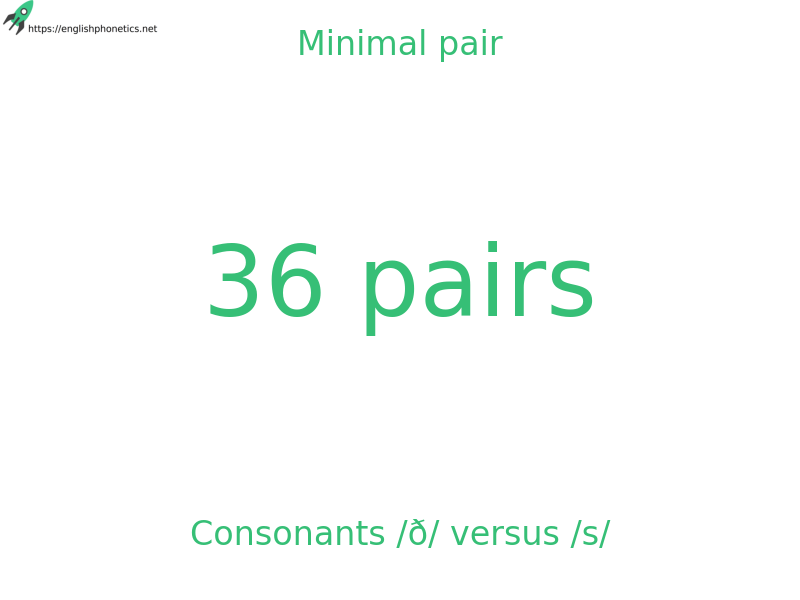Minimal Pair List Consonants /ð/ versus /s/, 36 pairs

The /ð/ sound is spelled with <th>. The /s/ sound is spelled with <s>, <ss> or <ce>. The
homograph
sow
makes pairs with
though
and
thou
.
This is a contrast between a voiced dental fricative and a voiceless sibilant, close together in the mouth. It is not a problem.
Thanks to the rarity of the /ð/ spund, the mean density value is very low at 0.2%. The list makes 30 semantic distinctions, a loading of 83%.
bathe base
bathing basing
bathed based
bather baser
bathe bass
clothe close
lathe lace
leather lesser
lithe lice
Louth louse
Lytham lissom
mouth mouse
mouthing mousing
mouthed moused
neither nicer
seethe cease
seething ceasing
seethed ceased
that sat
thee C
thee sea
thee see
thence sense
these C's
these seas
these sees
they say
thine sign
though sew
though so
though sow
those sows
thou sow
thus suss
thy sigh
writhe rice
.
Ready to improve your english accent?
Get a FREE, actionable assessment of your english accent. Start improving your clarity when speaking

John Higgins
John Higgins retired in 2000, having spent the bulk of his career as a British Council English Language Officer working in Thailand, Turkey, Egypt and Yugoslavia and the last fifteen years in lectureships at Bristol University and then running an M.Sc. programme at Stirling University. His main field was EFL, with a special interest in CALL (computer-assisted language learning) in which, together with Tim Johns of Birmingham, he was responsible for important developments in methods and materials.
His publications include A Guide to Language Laboratory Material Writing, Universitetesforlaget, 1969, Computers and Language Learning, Collins, 1984, Language Learners and Computers, Longman, 1988, and Computers in English Language Learning, Intellect Press, 1992, together with numerous papers, reviews and pieces of software. He maintains a web page on minimal pairs and homographs for teachers of English pronunciation skills.


